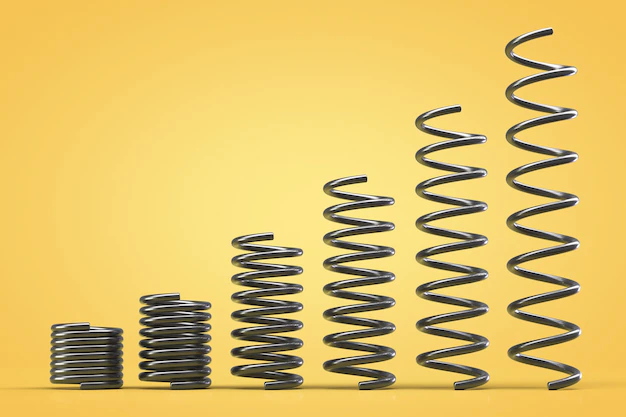In the dynamic landscape of engineering and manufacturing, springs stand as essential components, providing elasticity and resilience across a myriad of applications.
This article delves into the realm of innovative spring solutions, exploring the latest advancements in materials and design that propel these mechanical marvels into new frontiers of efficiency and versatility.
Cutting-Edge Design: Tailoring Springs For Diverse Applications
Smart Springs With Embedded Sensors
As the era of the Internet of Things (IoT) unfolds, springs are not immune to the wave of smart technology integration. Innovative designs now incorporate embedded sensors within the spring structure. These sensors can monitor factors like compression, tension, and temperature, providing real-time data on the spring’s performance and environmental conditions. This not only enhances predictive maintenance capabilities but also opens avenues for intelligent and adaptive systems where springs can dynamically respond to changing operational parameters.
Metal & Steel Springs: Pinnacle Of Resilience And Versatility
Amidst the diverse materials and cutting-edge designs, the enduring significance of metal & steel springs remains unmatched. These stalwart components, with their inherent strength and resilience, continue to be the backbone of countless applications.
Whether in automotive suspensions, industrial machinery, or everyday consumer products, metal and steel springs ensure reliable performance and longevity. The advancements in materials and design discussed earlier also extend to traditional metal springs, allowing for refinements that enhance their capabilities in terms of durability, load-bearing capacity, and overall efficiency.
1. Additive Manufacturing (3D Printing)
Additive manufacturing, commonly known as 3D printing, has become a game-changer in spring design and production. This technology allows for intricate and complex geometries that were previously challenging or impossible to achieve with traditional manufacturing methods. Springs can now be designed with custom shapes and structures, optimizing their performance and functionality.
Additionally, 3D printing facilitates rapid prototyping, accelerating the development cycle and providing engineers with greater flexibility in experimenting with various design iterations.
3. Computational Modeling And Simulation
The design phase of spring development has entered a new era with the widespread adoption of computational modeling and simulation. Engineers can now leverage advanced software tools to precisely simulate the behavior of springs under different conditions, allowing for more informed design decisions.
This technology enables the optimization of geometries, wire diameters, and coil configurations to meet specific performance criteria. The result is a more efficient and tailored spring design that aligns with the exact requirements of a given application.
Materials Redefined: Engineering Springs For Tomorrow
1. Titanium Alloys and Composite Materials
In recent years, the materials used in spring manufacturing have undergone a significant evolution. Traditional steel springs are now sharing the stage with advanced materials like titanium alloys and composite materials.
Titanium, known for its high strength-to-weight ratio and corrosion resistance, is finding applications in industries where lightweight and durable springs are crucial. Composite materials, combining polymers with reinforcing fibers, bring forth a new dimension of customization, allowing engineers to tailor springs for specific requirements, such as enhanced fatigue resistance or reduced weight.
2. Shape Memory Alloys (SMAs)
Another noteworthy development in spring materials is the increasing use of shape memory alloys (SMAs). These alloys, often composed of nickel and titanium, exhibit the unique ability to return to a predefined shape after deformation. This property makes SMAs ideal for applications requiring precise and reversible movements, such as in medical devices, automotive components, and robotics. The advent of SMAs in spring technology opens doors to innovative solutions where controlled deformation and shape recovery are paramount.
3. High-Performance Steels
While exploring new materials, advancements in traditional steel alloys should not be overlooked. High-performance steels, including maraging steel and pre-tempered alloys, offer enhanced strength and durability compared to standard spring steels. These alloys are particularly valuable in applications where the demand for higher load capacities, resistance to fatigue, and longevity is critical. The incorporation of high-performance steels represents a strategic choice in optimizing spring performance across various industrial settings.
In conclusion, the exploration of innovative spring solutions reveals a landscape where materials and design converge to redefine the capabilities of these fundamental components. From the integration of advanced alloys to the adoption of smart technologies, springs are adapting to the evolving demands of modern engineering.
The journey into the latest advancements in materials and design not only showcases the versatility of springs across industries but also underscores their enduring importance in shaping the mechanical landscape of the future. As technology continues to progress, springs will undoubtedly remain at the forefront, offering solutions that spring forth into new realms of possibility.
Read Also:




























